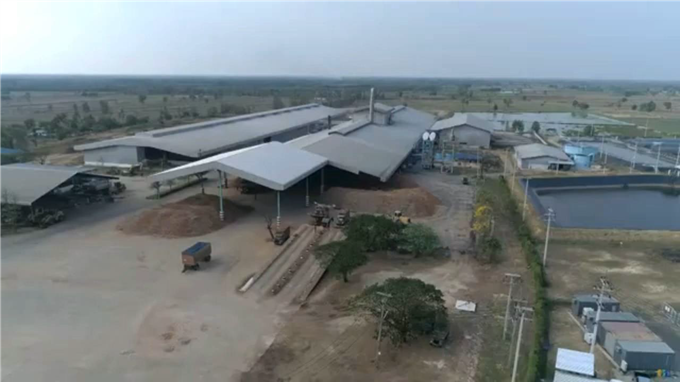Renewable Energy for Food Processing
Cập nhật lúc 13:55, Thứ hai, 15/07/2024 (GMT+7)
Currently there are many countries in the world, including countries in the Mekong River region that are facing challenges related to climate change and its impact on food systems. Innovations to foster the resilience of the agriculture sector have been increasing for years, such as climate-smart agriculture (CSA). These climate-smart technologies can be practices, equipment, and methodologies that increase productivity, enhance resilience (adaptation), and reduce greenhouse gases (mitigation) where possible in agricultural and food processes.
Currently there are many countries in the world, including countries in the Mekong River region that are facing challenges related to climate change and its impact on food systems. Innovations to foster the resilience of the agriculture sector have been increasing for years, such as climate-smart agriculture (CSA). These climate-smart technologies can be practices, equipment, and methodologies that increase productivity, enhance resilience (adaptation), and reduce greenhouse gases (mitigation) where possible in agricultural and food processes. Adoption of these practices ensures sustainability and addresses the pressing challenges of climate change in agriculture. While the majority of CSA practices are concentrated on the production side, there are emerging technologies applicable to other stages of the agrifood value chain. In Lower Mekong Countries, there are initiatives to apply climate-smart technologies in food processing, distribution, and marketing. For example, energy-efficient processing equipment to reduce greenhouse gas emissions has been introduced, including solar-powered dryers, biogas installations at processing facilities, and the use of agricultural waste for bioenergy. Food distribution systems have integrated renewable energy-powered cold chain systems (fingure 1 & 2) (MI conference, 2024).
    |
 |
| Figure 1. Biogas from waste of cassava starch production (Source: from internet) |
    |
 |
| Figure 2. Solar Energy (Source: energy.gov, navitassolar.in and wtsenergy.com) |
Benefits of implementing renewable energy on food production: (1) Reduces reliance on fossil fuels (cutting energy cost and mitigating environment impacts); (2) Financial incentives, tax credits, potential for income; (3) Solar, Wind, and Biomass-energy provides (stable; on-site power source; and energy independence); (4) Farm and food processing systems (become sustainability; can reduce GHG emissions and promote positive environment image); (5) Cost saving and (6) Environmental responsibility and renewables (Nettra S., 2024).
Positive impacts of using renewable energy for farm and food processing: (1) Substantial cost saving by decreasing eliminating electricity bills; (2) Lessen farm and food system carbon footprint leads to mitigation of climate change; (3) Ensuring a stable power supply even in remote areas; (4) Enhance overall sustainability of operation, aligning with eco-conscious practice and (5) Surplus energy production increases income.
Challenges and considerations: (1) high initial cost for equipment and installation; (2) need technical expertise; (3) complex permitting and regulatory to pose challenge; (4) require careful planning and financial consideration (Nettra S., 2024).
Steps to implement renewable energy solutions: (1) Assessing energy needs (analyze your farm & production line’s energy requirement; where & how energy is used and consider past bill, peak demand, season variations); (2) Choosing the right technology (research energy options suits your location, demand and resource availability); (3) Financial planning & incentive (evaluate cost & potential saving; create budget: purchase, installation equipment & maintenance and explore incentives, tax credit, grants subsidies); and (4) Installation & Maintenance: once energy is selected (engage qualified professional for installation; follow local regulations and obtains permits and regular maintenance & monitoring, maximize system efficiency and lifespan) (tracextech.com, 2024).
Dr. Vu Thi Kim Oanh, Faculty of Food Science and Technology, VNUA